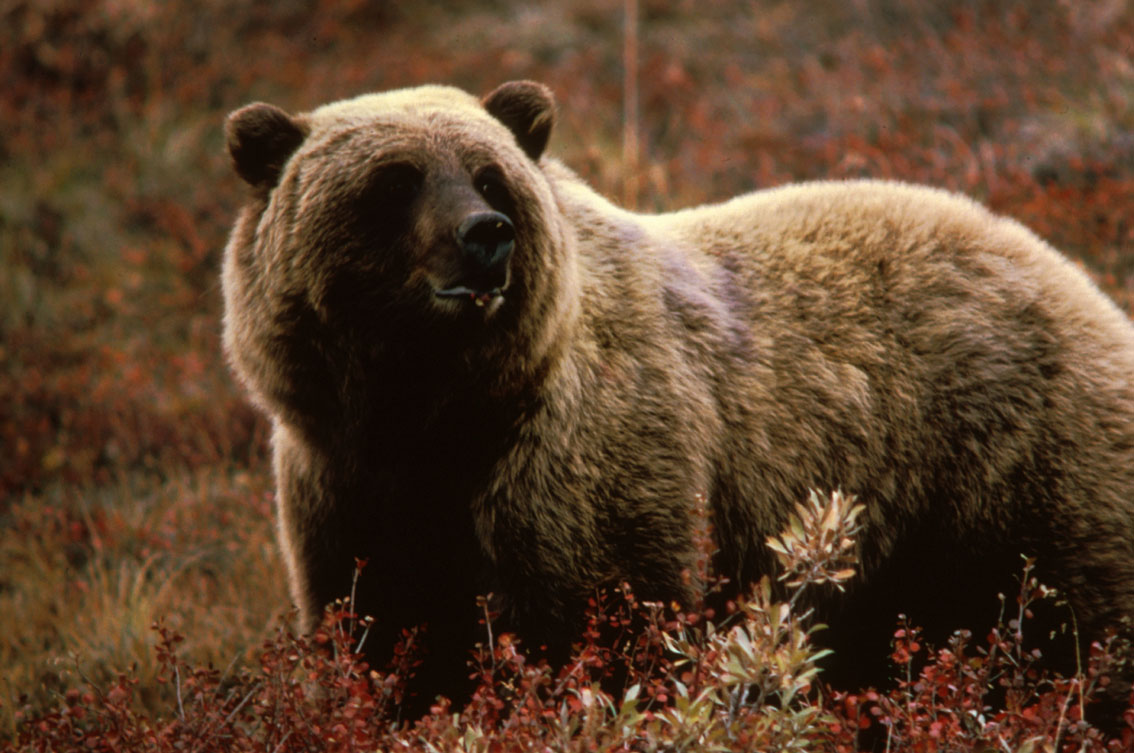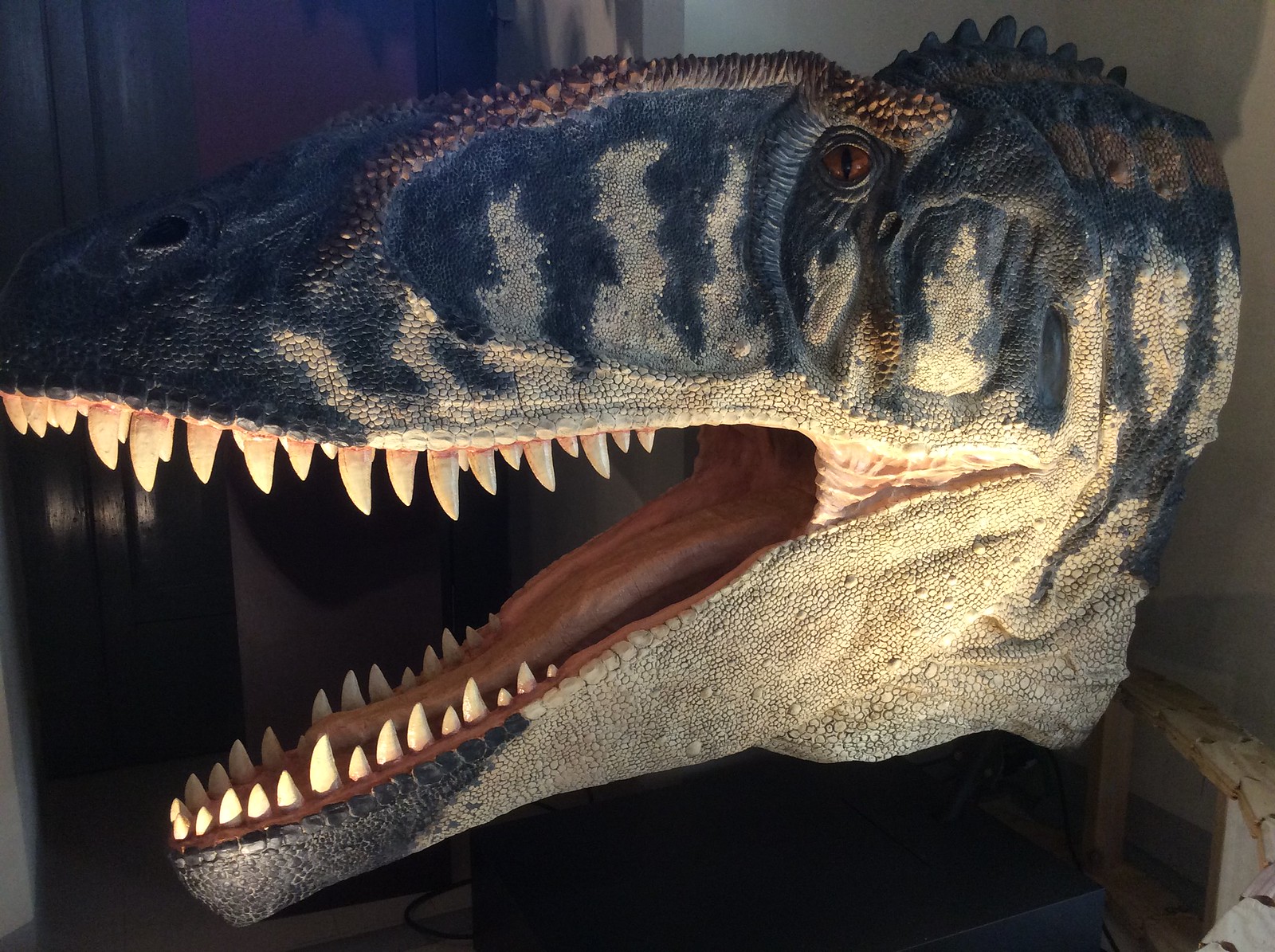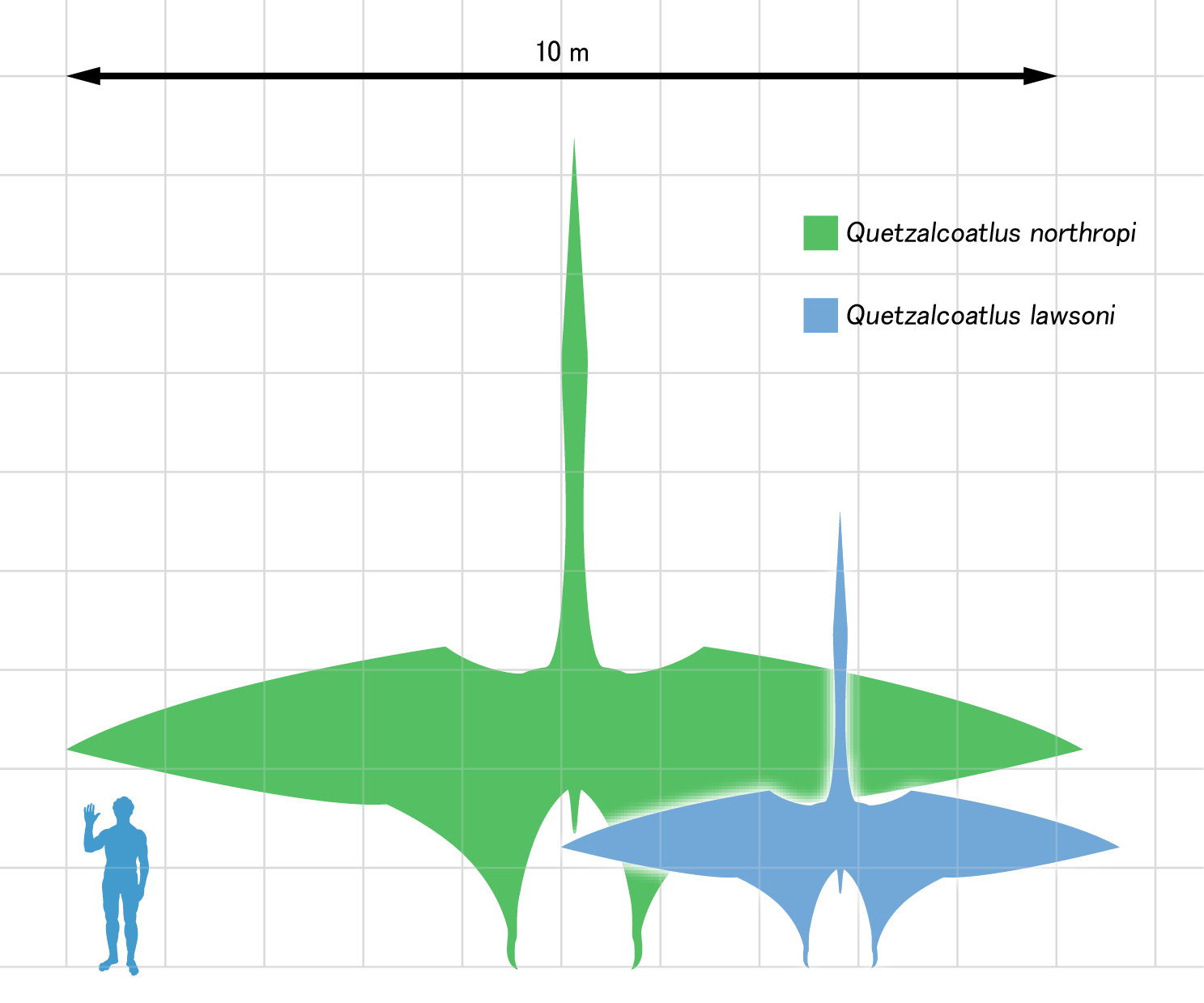Post by Infinity Blade on Apr 1, 2014 5:37:59 GMT 5
Grizzly Bear-Ursus arctos horriblis
The grizzly bear (Ursus arctos ssp.) is any North American subspecies of the brown bear, such as the mainland grizzly (U. a. horribilis), the Kodiak (U. a. middendorffi), the peninsular grizzly (U. a. gyas) and the recently extinct California grizzly (U. a. californicus). Specialists sometimes call the grizzly the North American brown bear because the grizzly and the brown bear are one species on two continents. In some places, some may nickname the grizzly the silvertip for the silvery, grizzly sheen in its fur. Since the mainland grizzly is so widespread, it is representative and archetypal for the whole subspecific group. Even so, classification is being revised along genetic lines. Its closest relatives are the European cave bear and the polar bear. Except for females with cubs, grizzlies are normally solitary, active animals, but in coastal areas, grizzlies gather around streams, lakes, rivers, and ponds during the salmon spawn. Every other year, females (sows) produce one to four young (usually two) which are small and weigh only about 500 grams (1 lb). A sow is protective of her offspring and will attack if she thinks she or her cubs are threatened. Most adult female grizzlies weigh 130–200 kg (290–440 lb), while adult males weigh on average 180–360 kg (400–790 lb). The average total length in this subspecies is 198 cm (6.50 ft), with an average shoulder height of 102 cm (3.35 ft) and hindfoot length of 28 cm (11 in). Newborn bears may weigh less than 500 grams (1.1 lb). In the Yukon River area, mature female grizzlies can weigh as little as 100 kg (220 lb). One study found that the average weight for an inland male grizzly was around 270 kg (600 lb) and the average weight for a coastal male was around 408 kg (900 lb). For a female, these average weights would be 136 kg (300 lb) inland and 227 kg (500 lb) coastal, respectively. On the other hand, an occasional huge male grizzly has been recorded which greatly exceeds ordinary size, with weights reported up to 680 kg (1,500 lb). A large coastal male of this size may stand up to 3 m (10 feet) tall on its hind legs and be up to 5 ft (1.5 m) at the shoulder. Although variable from blond to nearly black, grizzly bear fur is typically brown in color with white tips. A pronounced hump appears on their shoulders; the hump is a good way to distinguish a black bear from a grizzly bear, as black bears do not have this hump.

Quetzalcoatlus northropi
Quetzalcoatlus /kɛtsəlkoʊˈætləs/ was a pterodactyloid pterosaur known from the Late Cretaceous of North America (Maastrichtian stage) and one of the largest known flying animals of all time. It was a member of the Azhdarchidae, a family of advanced toothless pterosaurs with unusually long, stiffened necks. Its name comes from the Mesoamerican feathered serpent god Quetzalcoatl. Skull material (from the unnamed smaller species) shows that Quetzalcoatlus had a very sharp and pointed beak, contrary to some earlier reconstructions that showed a blunter snout, based on the inadvertent inclusion of jaw material from another pterosaur species, possibly a tapejarid or a form related to Tupuxuara. A skull crest was present but its exact form and size are still unknown. When it was first discovered, scientists estimated that the largest Quetzalcoatlus fossils came from an individual with a wingspan as large as 15.9 meters (52 feet), choosing the middle of three extrapolations from the proportions of other pterosaurs that gave an estimate of 11, 15.5 and 21 meters respectively (36 feet, 50.85 feet, 68.9 feet). In 1981, further study lowered these estimates to 11–12 meters (36–39 ft). More recent estimates based on greater knowledge of azhdarchid proportions place its wingspan at 10–11 meters (33–36 ft).[3] Mass estimates for giant azhdarchids are extremely problematic because no existing species share a similar size or body plan, and in consequence published results vary widely. While some studies have historically found extremely low weight estimates for Quetzalcoatlus, as low as 70 kilograms (150 lb) for a 10-meter (32-feet-10-inches) individual, a majority of estimates published since the 2000s have been higher, around 200–250 kilograms (440–550 lb).

The grizzly bear (Ursus arctos ssp.) is any North American subspecies of the brown bear, such as the mainland grizzly (U. a. horribilis), the Kodiak (U. a. middendorffi), the peninsular grizzly (U. a. gyas) and the recently extinct California grizzly (U. a. californicus). Specialists sometimes call the grizzly the North American brown bear because the grizzly and the brown bear are one species on two continents. In some places, some may nickname the grizzly the silvertip for the silvery, grizzly sheen in its fur. Since the mainland grizzly is so widespread, it is representative and archetypal for the whole subspecific group. Even so, classification is being revised along genetic lines. Its closest relatives are the European cave bear and the polar bear. Except for females with cubs, grizzlies are normally solitary, active animals, but in coastal areas, grizzlies gather around streams, lakes, rivers, and ponds during the salmon spawn. Every other year, females (sows) produce one to four young (usually two) which are small and weigh only about 500 grams (1 lb). A sow is protective of her offspring and will attack if she thinks she or her cubs are threatened. Most adult female grizzlies weigh 130–200 kg (290–440 lb), while adult males weigh on average 180–360 kg (400–790 lb). The average total length in this subspecies is 198 cm (6.50 ft), with an average shoulder height of 102 cm (3.35 ft) and hindfoot length of 28 cm (11 in). Newborn bears may weigh less than 500 grams (1.1 lb). In the Yukon River area, mature female grizzlies can weigh as little as 100 kg (220 lb). One study found that the average weight for an inland male grizzly was around 270 kg (600 lb) and the average weight for a coastal male was around 408 kg (900 lb). For a female, these average weights would be 136 kg (300 lb) inland and 227 kg (500 lb) coastal, respectively. On the other hand, an occasional huge male grizzly has been recorded which greatly exceeds ordinary size, with weights reported up to 680 kg (1,500 lb). A large coastal male of this size may stand up to 3 m (10 feet) tall on its hind legs and be up to 5 ft (1.5 m) at the shoulder. Although variable from blond to nearly black, grizzly bear fur is typically brown in color with white tips. A pronounced hump appears on their shoulders; the hump is a good way to distinguish a black bear from a grizzly bear, as black bears do not have this hump.

Quetzalcoatlus northropi
Quetzalcoatlus /kɛtsəlkoʊˈætləs/ was a pterodactyloid pterosaur known from the Late Cretaceous of North America (Maastrichtian stage) and one of the largest known flying animals of all time. It was a member of the Azhdarchidae, a family of advanced toothless pterosaurs with unusually long, stiffened necks. Its name comes from the Mesoamerican feathered serpent god Quetzalcoatl. Skull material (from the unnamed smaller species) shows that Quetzalcoatlus had a very sharp and pointed beak, contrary to some earlier reconstructions that showed a blunter snout, based on the inadvertent inclusion of jaw material from another pterosaur species, possibly a tapejarid or a form related to Tupuxuara. A skull crest was present but its exact form and size are still unknown. When it was first discovered, scientists estimated that the largest Quetzalcoatlus fossils came from an individual with a wingspan as large as 15.9 meters (52 feet), choosing the middle of three extrapolations from the proportions of other pterosaurs that gave an estimate of 11, 15.5 and 21 meters respectively (36 feet, 50.85 feet, 68.9 feet). In 1981, further study lowered these estimates to 11–12 meters (36–39 ft). More recent estimates based on greater knowledge of azhdarchid proportions place its wingspan at 10–11 meters (33–36 ft).[3] Mass estimates for giant azhdarchids are extremely problematic because no existing species share a similar size or body plan, and in consequence published results vary widely. While some studies have historically found extremely low weight estimates for Quetzalcoatlus, as low as 70 kilograms (150 lb) for a 10-meter (32-feet-10-inches) individual, a majority of estimates published since the 2000s have been higher, around 200–250 kilograms (440–550 lb).




















